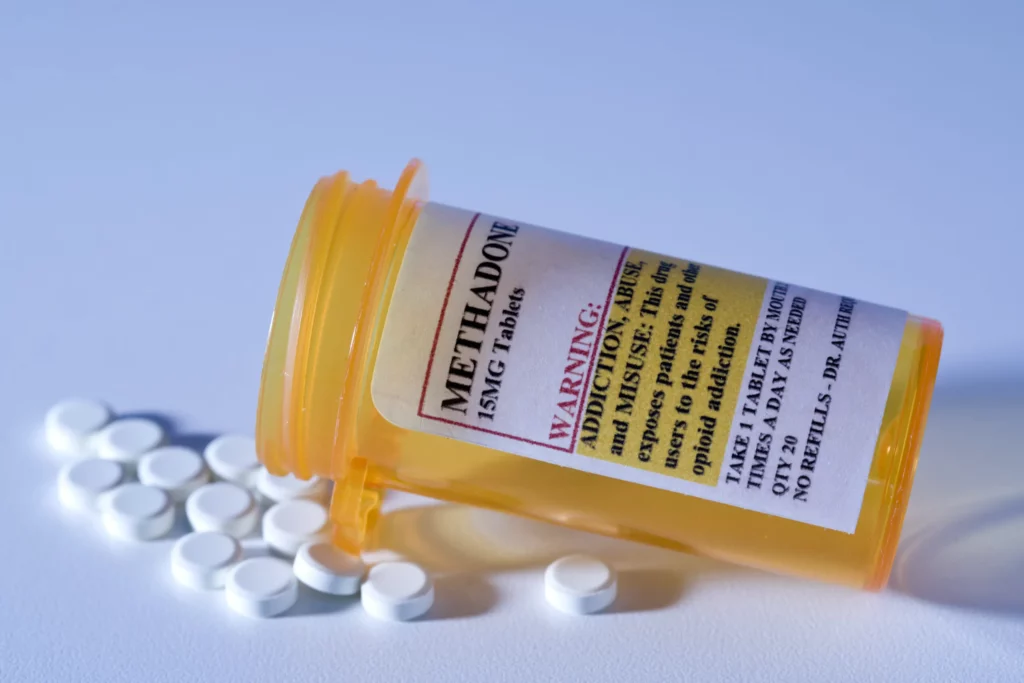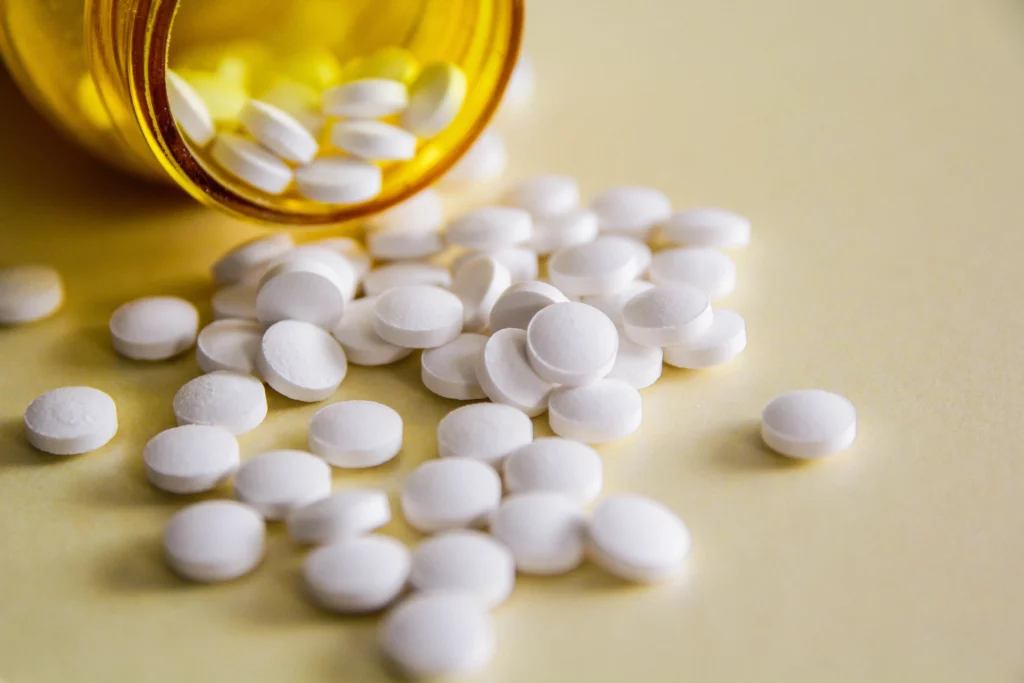In the realm of drugs and substances, the names mephedrone and methadone often arise, leaving many people confused about their differences. While these two substances share a similar sounding name and are associated with drug use, they are vastly different in terms of composition, effects, and medical applications.
Mephedrone: The Synthetic Stimulant
Mephedrone, known by its chemical name 4-methylmethcathinone or 4-MMC, is a synthetic stimulant that belongs to the cathinone class. Cathinones are a group of drugs related to amphetamines, which are known for their stimulating effects on the central nervous system. Mephedrone, often referred to as “meow-meow”, “drone”, or “M-CAT”, gained popularity in the early 2000s as a recreational drug, especially in the club and party scenes. Its rise in popularity was partly due to its easy availability online and its purported effects that were similar to those of MDMA (Ecstasy) and cocaine.
Chemical Structure and Synthesis
Mephedrone’s chemical structure is similar to cathinone, a substance found in the khat plant native to East Africa and the Arabian Peninsula. However, mephedrone available in the illicit market is synthetically produced in clandestine laboratories. The synthesis of mephedrone involves a series of chemical reactions, resulting in a fine white or off-white powder that is often sold in small packages, labeled as “bath salts”, “plant food” or “research chemicals”. It can be ingested orally, snorted, or injected.

Effects on the Body
Mephedrone is renowned for its stimulant effects, which typically begin within minutes to an hour after consumption. Users experience a surge in energy, increased alertness, and a sense of euphoria. The drug stimulates the release of neurotransmitters like serotonin, dopamine, and norepinephrine in the brain, leading to feelings of pleasure and heightened sociability. Some users also report enhanced sensory perception and feelings of empathy, leading to its use in social settings.
Short-Term Effects:
- Euphoria: Users often experience intense feelings of pleasure and happiness.
- Increased Energy: Mephedrone can lead to a significant boost in energy levels and physical activity.
- Enhanced Sociability: Users may feel more talkative, social, and emotionally connected to others.
- Heightened Sensory Perception: Some users report intensified sensory experiences, such as enhanced touch and taste sensations.
Risks and Dangers
Despite its stimulating effects, mephedrone is associated with several health risks and potential dangers:
- Dehydration: The drug can lead to severe dehydration due to increased physical activity and elevated body temperature.
- Hyperthermia: Mephedrone can cause dangerously high body temperatures, which can lead to heatstroke and organ damage.
- Cardiovascular Issues: It can cause an increase in heart rate and blood pressure, putting additional strain on the cardiovascular system.
- Psychological Effects: Mephedrone use can lead to anxiety, paranoia, agitation, and even hallucinations.
- Addiction: Regular use of mephedrone can lead to psychological dependence and addiction, prompting users to seek out the drug compulsively.
- Cognitive Impairments: Prolonged use may result in memory problems, impaired concentration, and difficulties in decision-making.

Methadone: The Opioid Replacement Medication
Methadone is a synthetic opioid medication that has been a cornerstone in the treatment of opioid addiction for several decades. It belongs to the class of drugs known as opioids, which includes substances like heroin, morphine, and oxycodone. Methadone is a long-acting opioid agonist, which means it binds to the same receptors in the brain that other opioids bind to but does so in a way that stabilizes the patient, reduces withdrawal symptoms, and curbs cravings. This unique pharmacological property has made methadone an invaluable tool in the field of addiction medicine.
Methadone was first synthesized in Germany during World War II as part of the search for a non-addictive painkiller. It was introduced into the United States in the 1940s and gained prominence in the 1960s as a treatment for opioid addiction. Since then, it has been extensively studied and used globally in medication-assisted treatment (MAT) programs to help individuals with opioid use disorders achieve and maintain recovery.
Medical Uses
Methadone is primarily used for two main purposes:
- Opioid Addiction Treatment: Methadone is widely prescribed to individuals with opioid use disorders as a maintenance medication. It helps in reducing cravings and withdrawal symptoms, allowing patients to lead stable lives without the disruptive highs and lows associated with opioid use. This form of treatment is known as Methadone Maintenance Therapy (MMT).
- Pain Management: In some cases, methadone is also used for chronic pain management. Its long duration of action allows for once-daily dosing, making it suitable for patients who require continuous pain relief.
Methadone works by binding to the opioid receptors in the brain, much like other opioids. However, its long half-life and slow onset of action help in preventing withdrawal symptoms and cravings without producing the euphoric effects associated with drugs like heroin. This makes methadone an effective and safer alternative for individuals trying to overcome opioid addiction.

Benefits of Methadone Maintenance Therapy:
- Reduction in Cravings: Methadone helps in reducing the intense cravings for opioids, allowing individuals to focus on their daily lives and recovery.
- Prevention of Withdrawal: By preventing the onset of withdrawal symptoms, methadone provides stability, allowing patients to engage in therapy and counseling without the distraction of physical discomfort.
- Harm Reduction: MMT reduces the risks associated with opioid misuse, such as injection-related infections (like HIV and Hepatitis C) and overdose deaths.
- Improved Quality of Life: With stable opioid use, individuals can rebuild relationships, hold jobs, and regain a sense of normalcy, leading to an overall improved quality of life.
Risks and Considerations of Methadone Use
Methadone, while a valuable tool in opioid addiction treatment, is not without its risks and considerations. Understanding these risks is crucial for patients, healthcare providers, and society at large to ensure the safe and effective use of this medication.
- Risk of Overdose: Methadone, like other opioids, can cause respiratory depression, where breathing slows down significantly or stops. This effect can be fatal, especially if methadone is misused, taken in excessive doses, or combined with other substances like alcohol or benzodiazepines.
- Physical Dependence and Withdrawal: Methadone use can lead to physical dependence, meaning the body becomes accustomed to the presence of the drug. Abrupt discontinuation or rapid dose reduction can result in withdrawal symptoms, which are uncomfortable and can include nausea, vomiting, diarrhea, muscle aches, and intense cravings.
- Interactions with Other Medications: Methadone can interact with other medications, potentially leading to dangerous side effects or reduced effectiveness.
- Cardiac Arrhythmias: Methadone can prolong the QT interval on the electrocardiogram (ECG), which can lead to serious, potentially life-threatening cardiac arrhythmias.
- Psychological Impact: Long-term use of methadone can have psychological effects, including changes in mood, cognitive function, and overall mental health. Some individuals may experience depression, anxiety, or other mental health challenges while on methadone.
While methadone has proven benefits in the treatment of opioid addiction, it is essential for patients and healthcare providers to be aware of the potential risks and challenges associated with its use.
Key Differences between Mephedrone and Methadone
Mephedrone and methadone, despite both being associated with drug use, differ significantly in terms of their chemical composition, effects, uses, and risks. Understanding these differences is crucial to promote awareness about the distinct nature of these substances.
Chemical Composition and Origin:
- Mephedrone: A synthetic stimulant derived from cathinone, chemically similar to substances found in the khat plant. It is illicitly manufactured in clandestine labs.
- Methadone: A synthetic opioid developed medically, created as a safer alternative to other opioids. It is a regulated medication used in addiction treatment programs under strict supervision.
Medical Use:
- Mephedrone: No recognized medical application; used recreationally for its stimulating effects, akin to MDMA and cocaine.
- Methadone: Medically prescribed for opioid addiction treatment, specifically in Methadone Maintenance Therapy (MMT). It helps patients stabilize, reducing cravings and withdrawal symptoms.
Effects and Usage:
- Mephedrone: Induces euphoria, increased energy, and sociability. Users consume it orally, snort, or inject it. Its effects can lead to dehydration, hyperthermia, and psychological disturbances.
- Methadone: Administered orally in clinical settings, providing stability without intense euphoria. Methadone prevents withdrawal symptoms, allowing patients to focus on their recovery efforts.
Risks and Dangers:
- Mephedrone: High risk of addiction, severe dehydration, cardiovascular problems, and psychological issues. Its illicit production results in inconsistent potency and purity, making safe dosing difficult.
- Methadone: Risk of physical dependence, withdrawal if misused or discontinued abruptly, potential for overdose, especially when combined with other substances. Requires precise dosing and vigilant medical supervision.
Legal Status:
- Mephedrone: Illegal in most countries due to its recreational use and associated health hazards.
- Methadone: Legal for medical use, but highly regulated. Only accessible through licensed healthcare providers and authorized addiction treatment programs.

Summary
It is evident that mephedrone and methadone represent two vastly different facets of the drug landscape. Mephedrone, a synthetic stimulant with no recognized medical use, poses significant health risks and is associated with recreational drug abuse.
On the contrary, methadone emerges as a beacon of hope in the realm of addiction treatment. This synthetic opioid, when administered judiciously under medical supervision, helps individuals grappling with opioid addiction stabilize their lives. Through programs like Methadone Maintenance Therapy (MMT), it mitigates withdrawal symptoms, reduces cravings, and facilitates the process of recovery. The regulated nature of methadone usage, coupled with its integral role in evidence-based addiction treatment, emphasizes the importance of accessible healthcare resources, education, and destigmatization of addiction issues within society.
Understanding these distinctions between mephedrone and methadone is pivotal for public health and safety.
